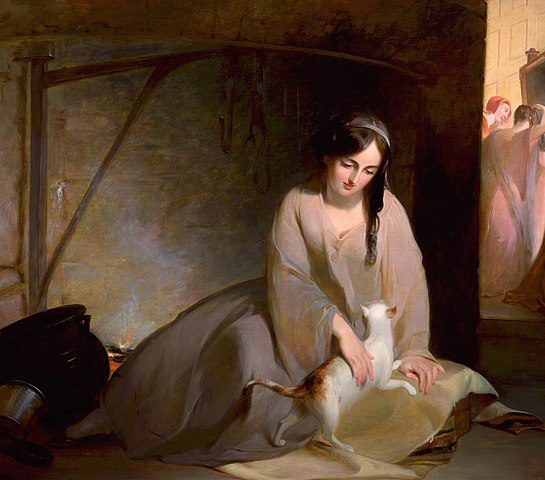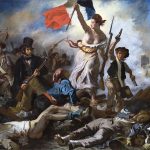
The tale of Cinderella is one of the most enduring and universal stories, with its roots in cultures around the world. Many trace the origins of the classic story to Rhodopis, a Greek slave girl who married the king of Egypt. This ancient version of the story shares several key elements with the Cinderella we know today, including themes of hardship, a dramatic transformation, and a rise to power. These early connections reveal how much the story has evolved while still maintaining its core emotional appeal.
The Origins of Cinderella: From Myth to Icon
Similar stories to Cinderella exist in many other cultures, showing just how widespread the core themes of the tale are. In China, there’s Ye Xian, a girl whose story dates back to the Tang dynasty. Ye Xian is helped by the spirit of a magical fish, and her tiny golden slippers lead to her marriage to the king. In Vietnam, a tale about Tấm, a girl who loses her mother early and suffers at the hands of her stepmother, echoes many Cinderella-like motifs. Tấm eventually marries a king after enduring much hardship, showcasing a familiar arc of transformation.
Aschenputtel, from the Germanic tradition and popularized by the Brothers Grimm, is yet another version where a mistreated girl rises above her circumstances. Instead of a fairy godmother, she’s aided by doves from her mother’s grave. Even in Native American cultures, there is a tale called The Rough-Face Girl, an Algonquin story in which the protagonist is mistreated by her sisters but eventually marries a powerful and kind man.
Through its many versions, the story of Cinderella has inspired a wide range of art forms. From painting and sculpture to modern film and fashion design, artists have drawn on the character’s journey for inspiration. But how exactly did this timeless story influence the visual arts? The answer lies in Cinderella’s universal themes, her resilience, and the emotional response she evokes in audiences.
Cinderella in Renaissance Art: A Symbol of Transformation
During the Renaissance, artists frequently explored themes of transformation and personal growth, making Cinderella’s story a perfect fit for visual interpretation. The story’s dramatic arc of going from rags to riches resonated with artists who were keen on expressing human experience through symbolism. Renaissance painters such as Sandro Botticelli and Fra Angelico were particularly drawn to themes of virtue, purity, and transformation, which are central to Cinderella’s character.
Cinderella’s journey, from being oppressed to ultimately being recognized for her inherent worth, provided a compelling narrative that mirrored the values of the Renaissance. In this period, art often reflected the tension between suffering and redemption, and Cinderella’s story exemplified this. Her tale became symbolic of hope and the belief that goodness would eventually triumph over adversity.
Furthermore, Cinderella’s rise to royalty was depicted as a reflection of divine providence. In some paintings, her rags were transformed into royal attire, symbolizing not just material wealth but spiritual elevation. These interpretations highlighted the Renaissance obsession with moral allegory, which made Cinderella a natural subject for art that sought to teach and inspire.
Baroque and Rococo Eras: Cinderella’s Elegance
As the Baroque and Rococo movements flourished in the 17th and 18th centuries, the character of Cinderella found new life in the visual arts. These movements were characterized by grandeur, drama, and a fascination with the opulent. Cinderella’s magical transformation, from a servant in rags to a princess in a lavish gown, aligned perfectly with the aesthetics of these eras.
Cinderella became a muse for artists like Jean-Honoré Fragonard and Antoine Watteau, who used their delicate, detailed styles to portray her in romanticized settings. During this period, Cinderella was often depicted in elaborate dresses, her transformation into royalty serving as a metaphor for the power of beauty and virtue. The Baroque’s sense of drama was captured in scenes like the dramatic reveal of her glass slipper, highlighting the magical elements of her story.
The emphasis on luxury and elegance also extended to the depiction of the fairy godmother, who was shown as an embodiment of grace and benevolence, helping Cinderella rise above her lowly station. Artists often used soft pastels and intricate details to reflect the dreamlike quality of Cinderella’s transformation. The visual opulence of these works mirrored the extravagance of the Rococo movement, capturing the fantasy and allure of the story in sumptuous detail.
The Romantic Period: A Heroine for the Ages
By the 19th century, during the Romantic period, Cinderella had become an archetype for the downtrodden heroine who overcomes hardship. Her story continued to influence artists, but this time with a focus on emotional depth and individual struggle. The Brothers Grimm’s version of Cinderella, Aschenputtel, played into the darker aspects of the tale, emphasizing the cruelty of the stepsisters and the justice that ultimately prevailed. This version captivated Romantic artists and poets who were intrigued by the moral complexities of her tale.
Artists like Eugène Delacroix and John Everett Millais explored Cinderella’s emotional journey through more dramatic and introspective works. These artists were fascinated by the psychological transformation of characters, and Cinderella’s internal struggle to maintain hope and virtue despite overwhelming adversity was a powerful theme. Her resilience made her a figure of inspiration, especially in a period where the individual’s emotional journey was central to artistic expression.
Moreover, the Romantic period saw an increased interest in folklore and fairy tales, which helped solidify Cinderella as a beloved character in popular culture. Her story was no longer just a narrative of transformation, but a symbol of enduring human values such as kindness, justice, and perseverance.
Cinderella and 20th-Century Fashion: An Icon of Elegance
Cinderella’s influence on the visual arts extended well into the 20th century, particularly in the realm of fashion. Her iconic ball gown became a symbol of elegance, inspiring designers to create timeless, ethereal looks that captured the imagination. The release of Disney’s 1950 animated movie Cinderella cemented her status as a fashion icon. Her sparkling blue gown, designed by Marc Davis, became one of the most recognizable dresses in film history and influenced generations of fashion designers.
In the 1950s and beyond, elements of Cinderella’s wardrobe—such as the glass slipper and the lavish ball gown—appeared in haute couture collections by designers like Christian Dior and Charles James. The character’s graceful transformation into a princess became a metaphor for the aspirational power of fashion itself. Just as Cinderella was transformed by her fairy godmother, women in the mid-20th century looked to fashion as a way to express beauty and elevate their social status.
Fashion photographers, like Richard Avedon, drew upon the Cinderella narrative to create editorial spreads that celebrated feminine grace and beauty. Cinderella’s story became symbolic of the transformative power of clothing and style, further cementing her place in modern visual culture.
Contemporary Art and Cinema: Reimagining Cinderella
In recent years, Cinderella has continued to be a powerful muse for artists across various mediums. Filmmakers, painters, and photographers have all drawn inspiration from her story, using it as a platform to explore themes of empowerment, transformation, and social justice. For example, contemporary filmmaker Kenneth Branagh’s 2015 retelling of Cinderella emphasized the importance of courage and kindness, themes that resonate deeply in today’s world.
Modern artists have also embraced Cinderella as a symbol of resilience and personal growth. Some have chosen to reinterpret her character in a contemporary light, challenging traditional narratives. In her 2007 painting series, Paula Rego reimagined Cinderella with a darker, more complex emotional range, focusing on the protagonist’s inner turmoil rather than her external transformation.
Additionally, performance artists and theater directors have taken Cinderella’s story beyond traditional fairy tale tropes. For instance, Matthew Bourne’s ballet adaptation transforms the setting to World War II London, using Cinderella’s journey as a metaphor for hope amidst destruction. These modern reinterpretations show how the Cinderella story, while rooted in ancient folklore, can still speak to contemporary audiences in meaningful and innovative ways.
Cinderella’s Influence on Animation and Illustration
Perhaps one of the most significant impacts of Cinderella on visual art is her influence on animation and illustration. Disney’s animated film Cinderella revolutionized the way fairy tales were portrayed on screen. The character design, color palette, and animation techniques used in the 1950 film set a new standard for the genre and shaped the future of animated storytelling.
Illustrators have also drawn heavily from the Cinderella narrative. Artists like Arthur Rackham and Edmund Dulac, known for their fairy tale illustrations in the early 20th century, created evocative images of Cinderella that have become iconic representations of the character. Their work emphasized the fantastical elements of the story, using intricate line work and lush colors to bring the magical world of Cinderella to life.
More recently, modern illustrators have reinterpreted Cinderella for children’s books, graphic novels, and digital art. The character’s enduring appeal continues to inspire illustrators who find new ways to capture the magic and mystery of her story.
Conclusion: A Timeless Story’s Lasting Impact
The tale of Cinderella is far more than a simple fairy tale; it is a narrative that has transcended time, culture, and artistic mediums. From ancient legends of Rhodopis to modern-day reinterpretations in film and fashion, Cinderella’s story continues to inspire artists of all disciplines. Her journey from oppression to triumph speaks to universal themes of resilience, transformation, and hope. Cinderella’s influence on the visual arts is a testament to the power of storytelling and its ability to evolve while maintaining its emotional core.
As long as artists continue to seek inspiration from tales of personal growth and the triumph of goodness, Cinderella will remain a powerful figure in the visual arts. Her legacy is, and will continue to be, a symbol of hope and beauty in the face of adversity.




